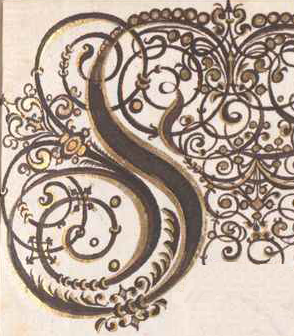What is melodic variation – Van Eyck
The most recognisable existing material to use for an improvisation is a melody. A melody can be used in many ways, but the most obvious one is the technique called ‘variation’. The melody is often kept the same, but extra, quicker notes, are added in between the original melody notes. Like a bridge, you can add more pillars, ornaments, lights, but the bridge itself remains the same, stable structure.
Below you can hear Jacob van Eyck’s “Wat zal men op den avond doen”. First the melody is played. From 00:38 the first ‘variation’ appears. At 01:12 the second variation or modo is started.
A small explanation of what happens. These are the first three notes of the original melody:

In a variation, why not change the rhythm? Instead of saying baby once, say it twice in the same amount of time (a well known device in pop music).
Perhaps that sounds a bit boring. Jacob van Eyck therefore decided to change how the added notes sound: he adds two lower notes instead of the same once. These lower notes are picked in such a way that they make the original note sound even nicer, fuller.
Together they form a chord, as if the melody is not anymore just one person, but a few people playing together. In later variations this leads to the feeling that a total chord is formed, as if it were played on a piano or guitar. All together the notes would sound like this:
But in Van Eyck’s ‘broken’ version it sounds like this:
